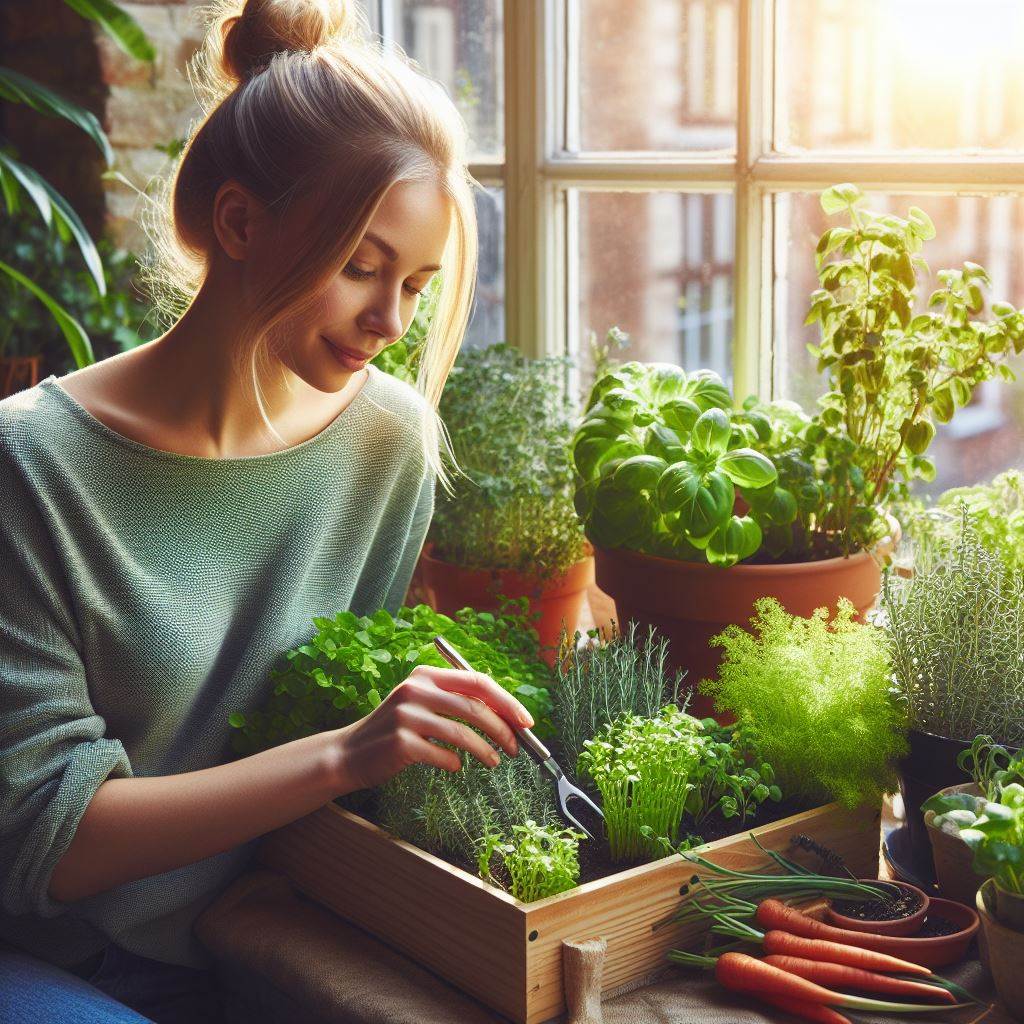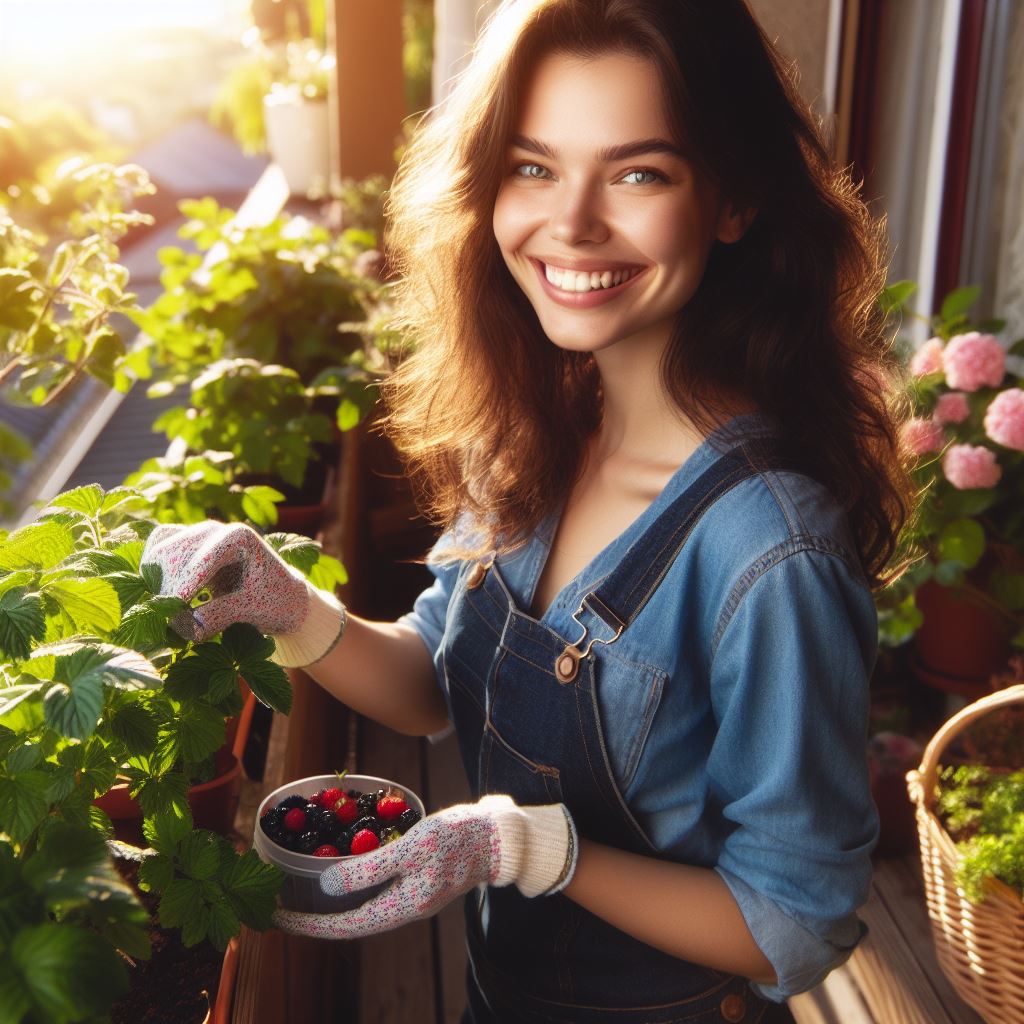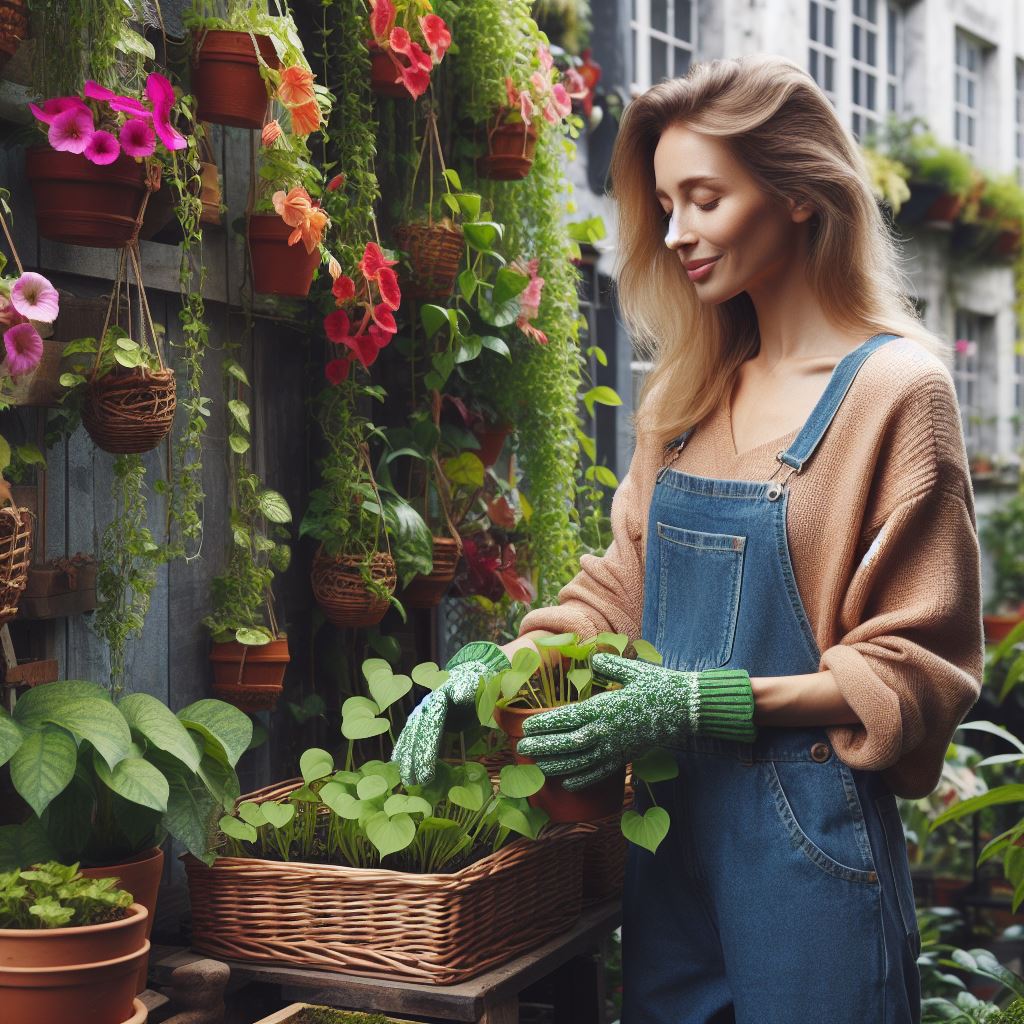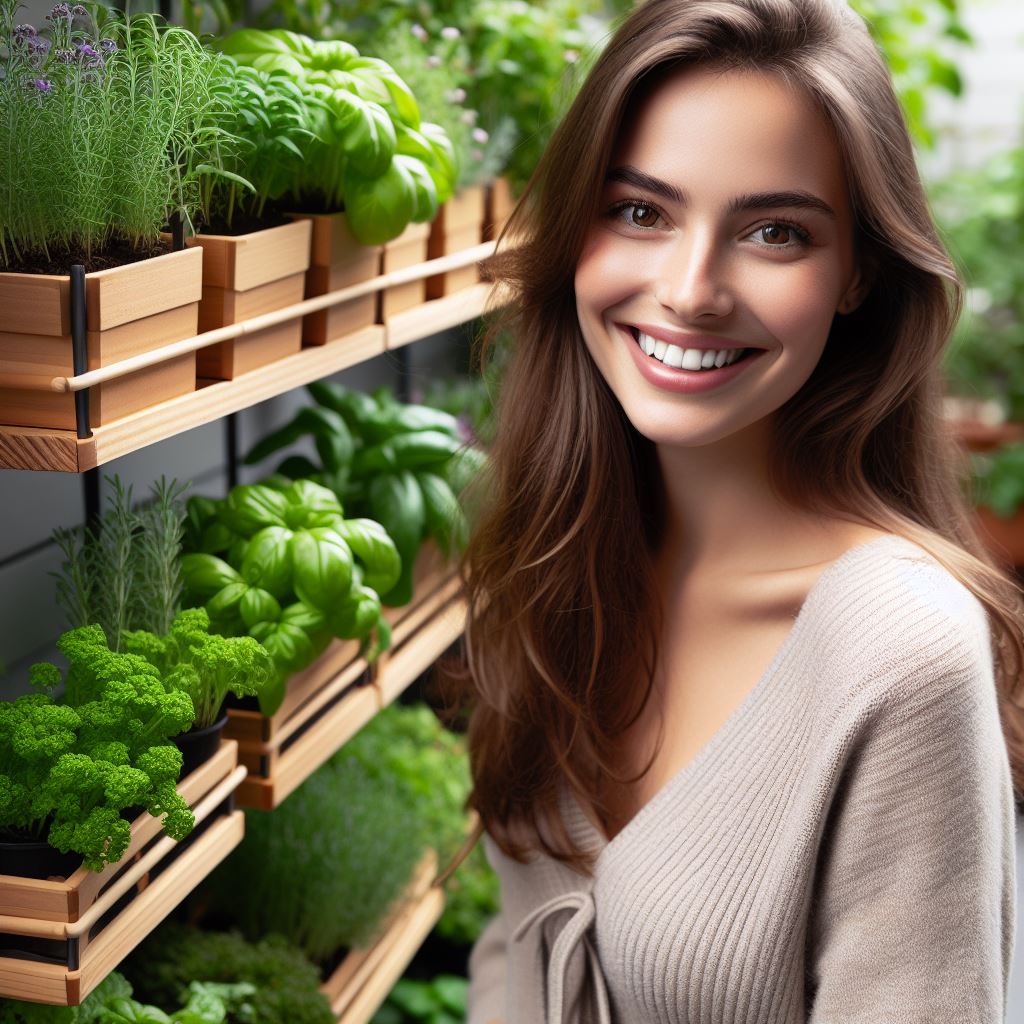Introduction
Move over sprawling fields, for the world of tiny soil science reigns supreme in potted gardens.
Within this miniature universe, mastering the intricacies of pot mixtures holds the key to flourishing greenery.
Frustrated by stunted growth or wilting leaves?
The culprit might be lurking in your soil.
This blog dives deep into the science behind perfect pot mixtures, the secret weapon for thriving indoor gardens.
We’ll dissect the fundamental components – sand, silt, clay, and organic matter – unveiling their crucial roles in drainage, aeration, and nutrient retention.
Learn how to craft customized blends suited to diverse plant needs, from desert-dwelling cacti to moisture-loving ferns.
But our exploration doesn’t stop there.
We’ll delve into the vibrant world of soil life, the hidden heroes tirelessly working beneath the surface, breaking down nutrients and maintaining a healthy mini-ecosystem.
Ready to unlock the secrets of tiny soil science and transform your pots into thriving oases?
Join us on this professional journey, plant enthusiasts, as we unveil the magic hidden within those unassuming containers.
Understanding Pot Mixtures
Pot mixtures and their importance in gardening
In gardening, pot mixtures refer to the combination of various materials used to create a suitable growing medium for potted plants.
These mixtures are vital as they provide an ideal environment for plants to thrive in confined spaces.
By creating the right pot mixture, gardeners can ensure optimal growth, root development, and overall plant health.
Components of a pot mixture, including soil, organic matter, and additives
Pot mixtures typically consist of three main components: soil, organic matter, and additives.
Transform Your Agribusiness
Unlock your farm's potential with expert advice tailored to your needs. Get actionable steps that drive real results.
Get StartedSoil acts as the primary base and contributes to the physical structure of the pot mixture.
Organic matter, such as compost or peat moss, enhances the mixture’s water-holding capacity and nutrient availability.
Additives, like perlite or vermiculite, are included to improve drainage and aeration within the pot mixture.
Significance of each component in promoting plant growth
Each component of a pot mixture plays a crucial role in supporting plant growth and overall plant health.
Soil provides anchorage for the roots, allowing plants to establish a strong foundation and absorb water and nutrients.
Organic matter enhances moisture retention, reduces compaction, and enriches the pot mixture with essential nutrients.
Additives, such as perlite or vermiculite, promote proper drainage and aeration, preventing waterlogged conditions and root rot.
Together, these components create an optimal growing environment, ensuring plants have access to essential elements for growth.
By understanding the importance of each component, gardeners can tailor pot mixtures to specific plant needs, maximizing their potential.
Read: Portable Plots: Mobile Garden Strategies
Factors to Consider for Perfecting Pot Mixtures
In order to perfect pot mixtures, there are several factors that need to be considered.
Different Types of Plants and Their Specific Soil Requirements
- Plants have specific soil requirements depending on their type.
- For example, succulents prefer well-draining soil, while ferns thrive in moist soil.
- Understanding the soil requirements of different plants is crucial for successful pot mixtures.
- Research the specific needs of the plants you plan to grow and choose an appropriate soil mixture accordingly.
- Using the wrong soil can lead to poor growth, root rot, and even plant death.
Size and Type of the Container Being Used for Planting
- The size and type of container you choose can greatly affect the growth and health of your plants.
- Containers should be appropriately sized to accommodate the root system of the plant.
- Mismatched container size can restrict root growth and result in stunted plants.
- Plastic containers tend to retain moisture, while clay pots allow for better air circulation.
- Choose a container that suits the specific needs of your plants for optimal growth.
Importance of Water Drainage and Aeration in Pot Mixtures
- Proper water drainage and aeration are essential for healthy pot mixtures.
- Excess water retention can lead to root rot and fungal growth.
- To ensure good drainage, consider adding materials like perlite or vermiculite to the soil mixture.
- These materials improve water flow and prevent waterlogged conditions.
- Adequate aeration is also crucial for root health.
- Use a soil mixture that is light and porous to allow for proper oxygen circulation.
By considering these factors, you can perfect pot mixtures and create the optimal growing environment for your plants.
Read: Efficient Herb Gardening in Mini Plots
Testing and Adjusting Pot Mixtures
The process of soil testing to assess its quality and composition
- Soil testing is crucial to determine the quality and composition of the soil.
- A sample is collected and sent to a laboratory for analysis.
- Tests include assessing nutrient levels, organic matter content, and pH level.
- This information helps understand the soil’s fertility and its potential for plant growth.
Significance of pH level and nutrient content in pot mixtures
- pH level measures the acidity or alkalinity of the soil.
- An ideal pH range of 5.5 to 6.5 is recommended for most plants.
- pH affects nutrient availability as some elements are more accessible within specific pH ranges.
- Nutrient content refers to the concentration of essential elements present in the soil.
- Plants require a balanced nutrient content for healthy growth and optimal yield.
Tips on how to adjust the pot mixture based on test results
- If the soil pH is too low or acidic, adding lime can raise the pH.
- If the soil pH is too high or alkaline, adding sulfur can lower the pH.
- Organic matter such as compost can improve nutrient content and enhance soil structure.
- If nutrient levels are low, adding fertilizer can provide the necessary nutrients.
- It’s essential to follow the recommendations provided by soil testing results for precise adjustments.
Read: Herb Boxes for Beginners: Small Space Edition
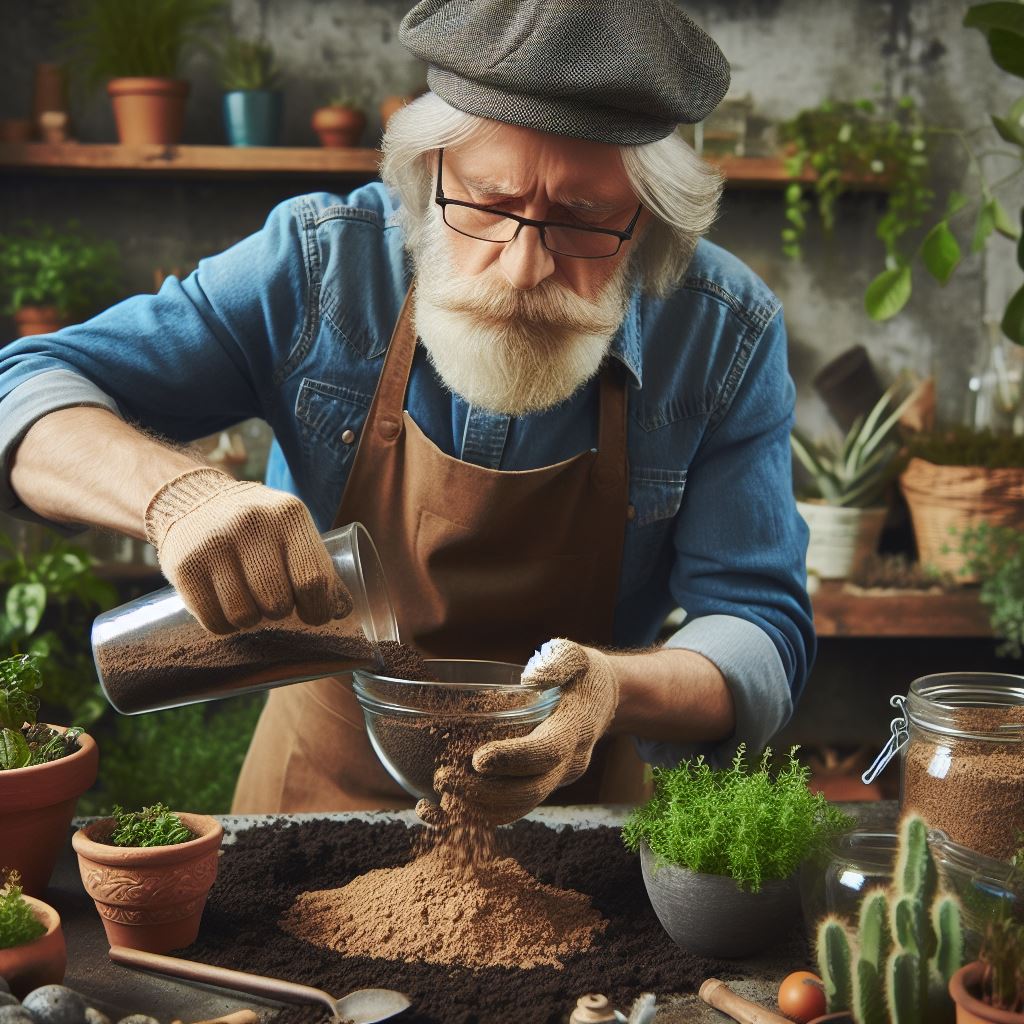
Choosing the Right Pot Mixtures for Different Plants
Recommendations for Various Types of Plants
- Vegetables: Opt for a pot mixture that provides good drainage and moisture retention, such as a blend of garden soil, perlite, and compost.
- Flowers: Choose a pot mixture that is light and well-draining, like a combination of potting soil, peat moss, and vermiculite.
- Succulents: Use a potting mixture that is specially formulated for succulents and cacti, typically consisting of sandy soil mixed with perlite or pumice for enhanced drainage.
Specific Pot Mixture Needs for Common Indoor Plants
- African Violets: These plants prefer a pot mixture that is loose, well-draining, and slightly acidic, such as a mix of vermiculite, peat moss, and perlite.
- Ferns: Opt for a potting mixture that is rich in organic matter and retains moisture, such as a blend of peat moss, compost, and perlite.
- Orchids: Use a pot mixture specifically formulated for orchids, which typically includes coarse bark, sphagnum moss, and perlite to ensure proper drainage.
Suggestions for Specialty Plants with Unique Pot Mixtures
- Carnivorous Plants: These plants require a pot mixture that is low in nutrients and highly acidic, like a combination of sphagnum moss and perlite.
- Epiphytes (Air Plants): Use a potting mixture that is free-draining and provides good air circulation, such as a blend of orchid bark, charcoal, and perlite.
- Bonsai Trees: Opt for a pot mixture that offers excellent drainage while still retaining some moisture, like a mix of akadama, pumice, and lava rock.
Finding the perfect pot mixture for your plants is essential for their overall health and growth.
When choosing a pot mixture, consider the specific needs of the plants you are growing.
Vegetables, flowers, and succulents have different requirements when it comes to soil types.
Recommendations for Various Types of Plants
For vegetables, a well-draining and moisture-retaining pot mixture is ideal.
A blend of garden soil, perlite, and compost can provide the necessary nutrients and drainage for optimal vegetable growth.
Flowers thrive in a light and well-draining pot mixture.
A combination of potting soil, peat moss, and vermiculite is a popular choice that provides the right balance of nutrients and drainage for flower plants.
Succulents require a potting mixture that replicates their natural environment.
A specific mix for succulents and cacti, consisting of sandy soil mixed with perlite or pumice, ensures proper drainage and prevents waterlogged roots.
Specific Pot Mixture Needs for Common Indoor Plants
Indoor plants have their unique pot mixture needs as well.
Showcase Your Farming Business
Publish your professional farming services profile on our blog for a one-time fee of $200 and reach a dedicated audience of farmers and agribusiness owners.
Publish Your ProfileAfrican violets, for instance, prefer a loose and well-draining potting mixture with slightly acidic properties.
A mix of vermiculite, peat moss, and perlite can create an ideal environment for these plants to thrive.
Ferns, on the other hand, require a potting mixture that retains moisture.
A blend of peat moss, compost, and perlite offers the necessary organic matter and moisture retention for healthy fern growth.
Orchids, known for their delicate beauty, need a pot mixture specifically formulated for them.
These mixtures usually include coarse bark, sphagnum moss, and perlite to ensure proper drainage and aeration for orchid roots.
Suggestions for Specialty Plants with Unique Pot Mixtures
There are specialty plants that require unique pot mixtures to meet their specific needs.
Carnivorous plants, like Venus flytraps, need a nutrient-poor and highly acidic mixture to mimic their natural habitats.
A combination of sphagnum moss and perlite can create the perfect environment for these fascinating plants.
Epiphytes, or air plants, thrive in a pot mixture that allows good air circulation and drainage.
A blend of orchid bark, charcoal, and perlite provides the necessary structure and airflow for these plants that grow without soil.
Bonsai trees require a pot mixture that offers excellent drainage while still retaining some moisture.
A mix of akadama, pumice, and lava rock can create a well-balanced environment for these miniature trees to thrive.
In a nutshell, choosing the right pot mixture for your plants is crucial for their growth and overall well-being.
By considering the soil requirements of various types of plants, as well as the specific needs of indoor and specialty plants, you can provide them with an optimal growing environment.
Read: Apartment Herb Gardening: Freshness on Hand
Maintaining and Troubleshooting Pot Mixtures
The importance of regular watering and monitoring soil moisture levels
- Regular watering is crucial to ensure the optimal growth and health of plants in pot mixtures.
- Monitor soil moisture levels by sticking your finger into the mixture to feel its dampness.
- Adjust watering frequency based on the moisture level, avoiding both dryness and excessive wetness.
- Remember that different plants have different water requirements, so adjust accordingly.
- Proper hydration enhances nutrient uptake, photosynthesis, and overall plant vitality.
Common issues that may arise in pot mixtures
- Nutrient deficiency: Look for yellowing leaves, stunted growth, or weakened plants, indicating a lack of essential elements.
- Overwatering: Excess water can drown plant roots, leading to root rot, wilting, or yellowing leaves.
- Soil compaction: Dense pot mixtures can suffocate roots and hinder water drainage and nutrient absorption.
- pH imbalance: Extreme acidity or alkalinity can affect nutrient availability and hinder plant growth.
- Pest infestations: Insects or fungi may attack pot mixtures, causing damage and hindering plant development.
Tips on how to troubleshoot and rectify pot mixture problems
- Identify the issue: Observe the plants carefully and look for symptoms to determine the problem.
- Nutrient deficiency: Apply a suitable fertilizer or organic amendments to replenish essential nutrients.
- Overwatering: Adjust watering frequency and ensure pots have proper drainage to prevent waterlogging.
- Soil compaction: Loosen the mixture periodically or repot the plant in fresh, well-draining potting soil.
- pH imbalance: Test the soil pH and make necessary adjustments using organic additives or pH adjusters.
- Pest infestations: Identify the pests and treat the affected plants with appropriate organic or chemical solutions.
- Prevention: Practice good plant hygiene, such as removing dead leaves and avoiding over-crowding pots.
- Regular maintenance: Monitor plant health, check for signs of problems, and address them promptly.
- Consult experts: Seek advice from horticulturists or experienced gardeners for complex or persistent issues.
By following these guidelines, you can maintain healthy pot mixtures and enjoy thriving plants in your garden.
Conclusion
This blog has explored the intricate world of pot mixtures, revealing their significance in crafting thriving miniature gardens.
We’ve navigated the roles of key components like sand, silt, clay, and organic matter, understanding their influence on drainage, aeration, and nutrient availability.
By customizing these elements, you can create the perfect foundation for diverse plant needs, from sun-loving cacti to humidity-adoring ferns.
Remember, healthy soil fosters healthy plants.
By perfecting your pot mix, you provide a haven for root systems, optimize nutrient uptake, and encourage beneficial soil life to thrive.
This hidden world of microorganisms plays a vital role in plant health, breaking down organic matter and making nutrients readily available.
Don’t be afraid to experiment!
Start with the principles outlined here, but personalize your mix based on your plant’s specific requirements and your growing conditions.
Observe, research, and adjust as needed.
Remember, the journey of discovery is part of the joy of gardening, and each tiny pot holds the potential for a flourishing ecosystem.
Embrace the science of Tiny Soil Science, and watch your miniature gardens transform into vibrant sanctuaries of green magic.

